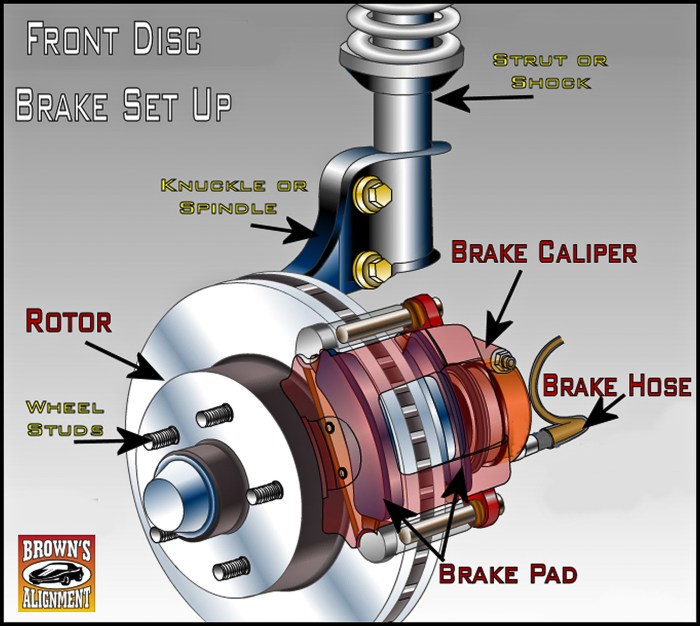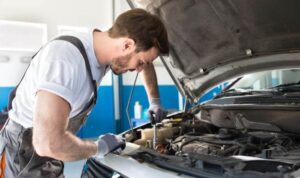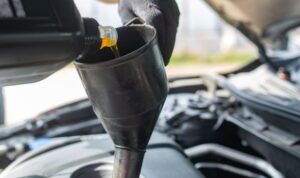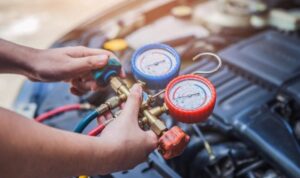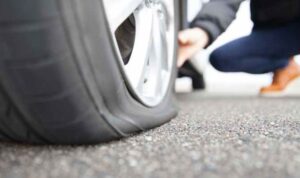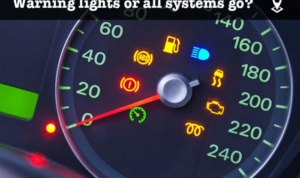Kicking off with How to repair car brakes, this opening paragraph is designed to captivate and engage the readers, setting the tone for what’s to come. Understanding the importance of maintaining proper brake function is crucial for vehicle safety and overall performance. From identifying common signs of brake issues to providing maintenance tips, this guide will walk you through the essential steps of repairing car brakes.
Exploring the basic components of a car brake system, signs of brake problems, inspection procedures, repair techniques, and maintenance tips, this guide covers everything you need to know to keep your brakes in top condition.
Understanding Car Brakes

Car brakes are a crucial component of any vehicle, responsible for slowing down or stopping the car when needed. Understanding the basic components of a car brake system is essential for maintaining vehicle safety and proper function.
Brake System Components, How to repair car brakes
- Brake Pads: These are rectangular-shaped plates that press against the brake rotors to create friction and slow down the vehicle.
- Brake Rotors: Also known as brake discs, these are flat, round metal discs that rotate with the wheel and are squeezed by the brake pads to generate friction.
- Calipers: These are devices that hold the brake pads and press them against the rotors when the brake pedal is engaged.
- Brake Lines: These are metal tubes that carry brake fluid from the master cylinder to the calipers, allowing hydraulic pressure to be applied to the brakes.
- Master Cylinder: This is the main component that holds the brake fluid and generates the hydraulic pressure needed to activate the brake system.
Function of Each Component
- The brake pads create friction against the rotors, converting kinetic energy into heat and slowing down the vehicle.
- The brake rotors provide a surface for the brake pads to press against and help dissipate heat generated during braking.
- Calipers hold the brake pads in place and control their movement to ensure even pressure on the rotors.
- Brake lines transmit hydraulic pressure from the master cylinder to the calipers, allowing for precise control of the braking system.
- The master cylinder stores brake fluid and converts mechanical force from the brake pedal into hydraulic pressure to activate the brakes.
Importance of Brake Maintenance
Proper maintenance of the brake system is crucial for vehicle safety. Regular inspections, brake pad replacements, and fluid checks are essential to ensure the brakes function correctly. Neglecting brake maintenance can lead to decreased stopping power, brake fade, or even brake failure, posing a serious risk to both the driver and other road users.
Signs of Brake Issues

Brake issues can manifest in various ways, often giving drivers warning signs before a complete failure. It’s crucial to recognize these signs early to prevent accidents and costly repairs.
Squeaking Noise
- Squeaking or squealing noises when applying the brakes can indicate worn brake pads. The noise is caused by a wear indicator rubbing against the rotor, signaling that it’s time for a replacement.
- Ignoring this sound can lead to further damage to the rotors, resulting in a more extensive and expensive repair.
Grinding Sensation
- A grinding sensation or noise while braking is often a sign of metal-to-metal contact between the brake pads and rotors.
- This can severely damage the braking system and compromise the vehicle’s ability to stop efficiently.
Pulling to One Side
- If your car pulls to one side when braking, it could indicate uneven brake pad wear or a problem with the brake caliper.
- This issue can affect the vehicle’s stability and handling, posing a safety risk on the road.
Inspecting the Brakes

When it comes to ensuring the safety and efficiency of your vehicle, inspecting the brakes is a crucial maintenance task. Regular visual inspections can help identify any potential issues early on and prevent more serious problems down the road.
Step-by-Step Guide for Visual Inspection
- Start by visually inspecting the brake pads through the wheels. Look for any signs of wear or thinning.
- Check the brake rotors for any grooves, scoring, or uneven wear.
- Inspect the brake calipers for leaks, cracks, or any signs of damage.
- Examine the brake lines for any leaks, corrosion, or signs of wear.
- Make sure the brake fluid reservoir is at the proper level and check for any signs of contamination or discoloration.
Tools Needed for a Thorough Brake Inspection
- Flashlight: To help you see better in dimly lit areas while inspecting the brakes.
- Jack and Jack Stands: To safely lift the vehicle and support it while inspecting the brakes.
- Tire Iron: To remove the wheels for better access to the brake components.
- Brake Pad Thickness Gauge: To measure the thickness of the brake pads accurately.
Checking Brake Fluid Levels and Brake Pad Thickness
- Locate the brake fluid reservoir under the hood of your car and ensure the fluid level is between the minimum and maximum marks.
- Inspect the brake pads by looking through the wheel spokes. If the pad thickness is less than 1/4 inch, it may be time to replace them.
- Measure the brake pad thickness using a brake pad thickness gauge to get an accurate reading.
- If you notice any leaks, unusual noises, or decreased braking performance during your inspection, it’s essential to have a professional mechanic take a closer look.
Brake Repair Procedures

When it comes to brake repair procedures, it is crucial to follow the correct steps to ensure the safety and effectiveness of your vehicle’s braking system. This includes replacing brake pads and rotors, bleeding the brake system to remove air bubbles, and adhering to manufacturer specifications throughout the repair process.
Replacing Brake Pads and Rotors
To replace brake pads and rotors, follow these steps:
- 1. Lift the vehicle and remove the wheels to access the brake components.
- 2. Unbolt the caliper and remove it carefully, being mindful of the brake line.
- 3. Take out the old brake pads and inspect the rotors for wear and damage.
- 4. Install the new brake pads and ensure they are properly aligned.
- 5. Replace the rotors if necessary, making sure they are within the manufacturer’s specifications.
- 6. Reassemble the caliper, wheels, and lower the vehicle before testing the brakes.
Bleeding the Brake System
Bleeding the brake system is essential to remove any air bubbles that may have entered the brake lines. Here’s how to bleed the brake system:
- 1. Locate the brake bleeder valve on each brake caliper.
- 2. Attach a clear hose to the bleeder valve and place the other end in a container with brake fluid.
- 3. Have a helper press the brake pedal while you open the bleeder valve to expel air and old fluid.
- 4. Close the valve before releasing the brake pedal and repeat the process until no air bubbles are visible.
- 5. Check the brake fluid level and top up if necessary.
Importance of Following Manufacturer Specifications
It is crucial to follow manufacturer specifications during brake repairs because:
- 1. Using the wrong brake pads or rotors can lead to decreased braking performance and safety hazards.
- 2. Incorrect installation can cause damage to other brake components and compromise the overall braking system.
- 3. Adhering to specifications ensures the longevity and efficiency of the brakes, enhancing the vehicle’s overall performance.
- 4. Failure to follow guidelines may void warranties and result in costly repairs down the line.
Maintenance Tips: How To Repair Car Brakes

Regular maintenance and care for your car’s brakes are crucial to ensure optimal performance and safety on the road. By following these maintenance tips, you can extend the lifespan of your brake components and keep your vehicle in top condition.
Importance of Regular Inspections
Regular brake inspections are essential to catch any issues early on and prevent more significant problems down the line. Make sure to have your brakes checked by a professional mechanic at least once a year or more frequently if you notice any warning signs such as squeaking or grinding noises, vibrations, or reduced braking efficiency.
Proper Bedding of New Brake Pads
When installing new brake pads, it is crucial to properly bed them to ensure optimal performance and longevity. Follow these steps to bed your new brake pads:
- Clean the rotors and calipers to remove any contaminants that could affect the bedding process.
- Start with a series of gentle stops from 30 mph to 10 mph to gradually heat up the pads and transfer a thin layer of friction material onto the rotors.
- Allow the brakes to cool down completely between each stop to prevent overheating and glazing of the pads.
- Repeat the process a few times until you feel the brakes bite smoothly and consistently.
Closing Notes
In conclusion, ensuring the proper functioning of your car brakes is vital for your safety on the road. By following the steps Artikeld in this guide, you can maintain your brake system and prolong its lifespan. Remember to regularly inspect and maintain your brakes to prevent potential issues and ensure optimal performance. Stay safe and happy driving!
The Honda eCVT hybrid system combines the efficiency of an electric motor with the power of a gasoline engine, resulting in a smooth and responsive driving experience. This innovative technology seamlessly transitions between electric and gasoline power, optimizing fuel efficiency and reducing emissions.
Learn more about the Honda eCVT hybrid system and how it is revolutionizing the way we drive.
When it comes to hybrid vehicles, Honda’s eCVT system stands out for its efficiency and performance. The Sistem hybrid eCVT Honda combines electric motors with a continuously variable transmission to deliver smooth acceleration and improved fuel economy. This innovative technology seamlessly switches between electric and gasoline power, providing a seamless driving experience while reducing emissions.
Drivers can enjoy the benefits of hybrid technology without compromising on power or responsiveness, making the eCVT system a popular choice among eco-conscious consumers.
- Common car engine problems: Top issues, signs, and solutions - January 6, 2025
- DIY car oil change guide: Everything you need to know to save time and money - January 5, 2025
- How to Repair Car Brakes: A Comprehensive Guide to Ensure Vehicle Safety - January 4, 2025

